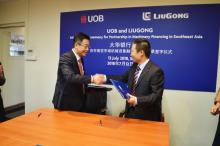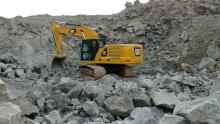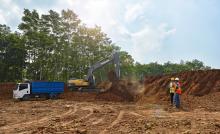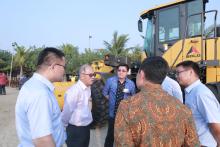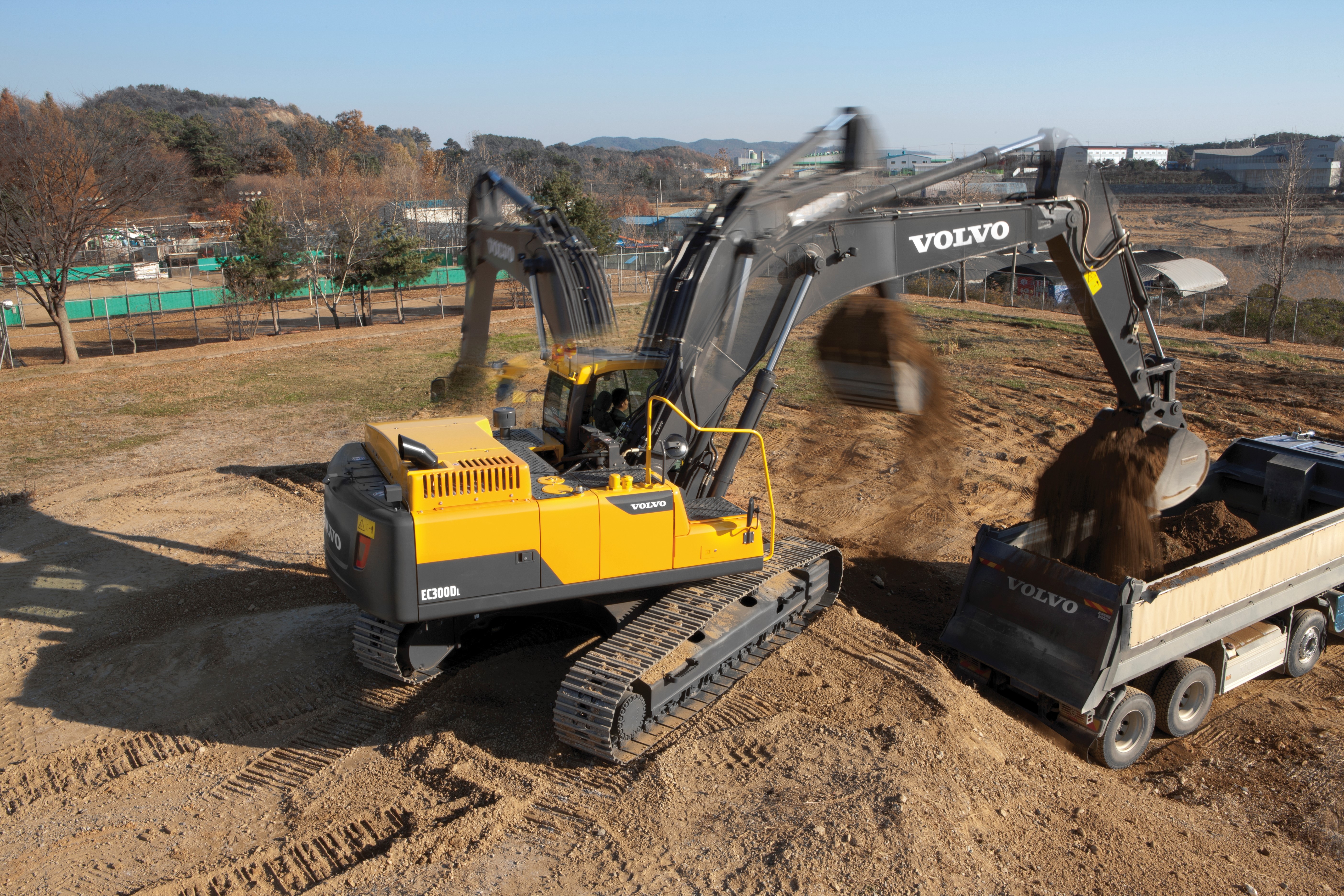
Indonesia is tipped for rapid growth and will become the fifth biggest construction market in the world in the next few years. Patrick Smith reports.
With the largest economy in South-East Asia, Indonesia’s record as an economic power can fairly be described as impressive.
According to the Big 5 Construct Indonesia, Global Construction 2025 predicts that Indonesia’s average construction output growth a year will be 6% from 2012-2025, and that in the same period it will move from being the tenth biggest construction market in the world to the fifth.
Indeed, according to the
Indonesia’s real GDP growth picked up to 5.2% in the fourth quarter of 2017 from 5.1% in the previous quarter, and for the whole of 2017, the country’s GDP growth rose to 5.1% from 5% in 2016, its highest growth rate in four years.
“Faster growth in 2017 was due to stronger investments and net exports, lifted by improved global trade, and the continued recovery in commodity prices,” says the report.
“Public investments also supported growth, with total government spending growing the fastest in three years.”
Rodrigo A. Chaves, World Bank country director for Indonesia and Timor-Leste, says: “Sound macro-economic policies have contributed to investment growth reaching a five-year high.
“But to meaningfully accelerate investments outside the mining sector, Indonesia needs to consider putting together a bold and impactful mixture of policies that will open the economy.”
The World Bank report says the country’s real GDP growth is projected at 5.3% in 2018, but the forecast faces risks if global trade slows along with growth of domestic private consumption, which constitutes over half of the country’s GDP.
This issue of the Economic Quarterly focuses on collecting more and spending better for inclusive growth. Over the last 15 years, fiscal policy has contributed to Indonesia’s economic growth by maintaining macro-economic stability. However, the World Bank says fiscal policies can play a larger role to ensure sustainable and inclusive growth.
Indonesia can reduce inequality by increasing the level and efficiency of expenditures that benefit the bottom 60% of Indonesian families. Most of these expenditures, such as health and education, also address inequality of opportunity and build the foundations for solid growth in the future.
“To support inclusive growth, Indonesia could spend more effectively in education and spend more in priority areas such as infrastructure, health, and social assistance. Increased spending could be supported by collecting more revenues in an efficient, growth-friendly manner,” says Frederico Gil Sander, lead economist for the World Bank in Indonesia.
The launch of the March 2018 Indonesia Economic Quarterly is part of ‘Voyage to Indonesia’, a series of events leading up to the 2018 IMF-World Bank annual meetings in Bali (12-14 October). The Australian Department of Foreign Affairs and Trade supports the publication of the report.
Meanwhile, Indonesia, which is one of the emerging market economies of the world, has a list of impressive mega-projects that will require equipment, materials and personnel.
For example, the Trans-Java toll road, with a length of more than 1,100km, has an estimated cost of some US$5.5 billion. It is planned to stretch from the ports of Banyuwangi in East Java to Merak in Banten province in West Java.
Another huge project is the planned $20 billion, 40km Selat Sunda Bridge, the longest in Indonesia, to connect the western Indonesian islands of Sumatra and Java through road and railway, while the Jakarta- Bandung super express train, which will travel the 144km between Jakarta and Bandung is estimated to cost $6.7 billion.
Suhen Agarwal, VP, sales & services, aggregates, Asia-Pacific,
“Urbanisation, a strong labour market, and steady real-wage gains provide a solid base for 5-6%/year consumer demand growth in coming years.”
And he also points to the increasing market for infrastructure.
“A flurry of major infrastructure projects in Indonesia is set to boost the construction sector. Over the next five years or so, the government aims to build 5,500km of railways; 2,600km of roads; 1,000km of toll roads; 49 dams and 24 sea ports as well as to construct power plants with a combined capacity of 35,000MW,” he says.
“Government-led infrastructure projects that also include the one million houses programme would also contribute to demand for equipment.
“Indonesia’s construction will continue to thrive over the forecast period (2017-2021), driven by investment in infrastructure, energy, and residential projects. The construction industry’s output grew by 6.2% in 2017 in real terms, following an average annual growth of 6.6% during the preceding four years.
“Developing infrastructure is one of the key points in the government’s reform agenda. Faster construction growth to 2021 is possible if all key initiatives are put in place and successful. So, the construction sector is a major driver for the growing demand for equipment.
“Plus, there is a growing demand for residential and commercial properties in the world’s fourth most populated country.
“If all the above infrastructure projects go through, there will be a huge demand for equipment, particularly in the aggregates sector.
“Also, there is a huge demand for concrete, which accounts for 40% of building materials used in projects. So, there would be a demand for manufacturing sand equipment.”
Asked about what type of equipment is most in demand, Agarwal says: “Any equipment related to concrete and cement and are used in infrastructure development.
“Earthmoving machineries, crushing equipment and batching plants and so on. “For crushing, stationary equipment and plants are more popular. However, there is a rising interest in mobile crushing equipment.” In the region, Metso sells its equipment through a distributor, and looking to 2018, Agarwal says: “We are bullish about our growth in Indonesia.
“However, the competition is very intense, particularly from low-cost Chinese suppliers who are also able to offer flexible payment terms. Nevertheless, we still see lots of opportunities in Indonesia to grow our business in middle and premium segments with our world-class technology, products and offerings. We hope to have a good second half of 2018.”
The Northern Ireland wet processing equipment manufacturer for global sand and aggregates, mining, C&D waste recycling and industrial sand customers, sees huge growth potential in South-East Asia for its Combo manufactured sand washing plant range.
CDE Asia is already at the forefront of the manufactured sand marketplace across Asia with over 280 installations spread over India, Indonesia, Malaysia, Thailand, Vietnam, Japan, Philippines, Sri Lanka, Pakistan and Bangladesh.
The 100tonnes/hour Combo Alpha-i is said to recycle 95% of the water used in its operation.
Meanwhile,
The company’s Indonesian leadership and staff, along with dealers Intraco Penta Prima Servis (IPPS) and Indotruck Utama (ITU), gathered for a special event to officially welcome the new machine.
The company says that the excavator’s robust design makes it an ideal choice for mining.
Equipped with a smart electro-hydraulic system, the EC300DL is said to provide increased power, digging force, faster cycle times and greater control.
It is equipped with a Volvo D7 diesel engine that delivers up to 170kW of power and 11% more fuel efficiency compared with previous models, and operators have the option of using Volvo’s ECO mode, which contributes up to 5% of the machine’s total fuel efficiency saving, with no loss of performance in most operating conditions.
In another move, heavy construction equipment manufacturer
Based in Balikpapan, Intraco Penta will provide Dressta products and services throughout the construction, mining, quarry, road and highway, landfill and forestry segments.
Headquartered in Stalowa Wola, Poland, Dressta was acquired by Chinese heavy equipment manufacturer
LiuGong has also signed a memorandum of understanding (MoU) with the United Overseas Bank (UOB) for partnership in machinery financing in South-East Asia, with Indonesia and Thailand being the first two countries to have the new scheme rolled out.
The MoU was signed between Chen Hao, the president of LiuGong Machinery Asia Pacific, and Karunia W Tjuradi, managing director and head of sector solutions group at UOB.
“Since LiuGong set up its Asia-Pacific subsidiary office in 2011 to export its construction equipment to the South-East Asian market, we have been gaining market acceptance offering quality products as well as excellent after-sales services.” says Hao.
“Our perseverance and investment has started to pay off and the market has also showed signs of recovery this year. In this first quarter, we experienced more than 50% growth increases in sales volume in the South-East Asia market.”
According to Hao, the MoU establishes a partnership between LiuGong and UOB to provide financing solutions for LiuGong’s dealers and customers, bringing several benefits to both, including easy access to financing solutions specifically for them, which they previously did not have.
They will also enjoy interest rate loans at a more competitive rate.
SDLG LOADERS' OIL FIELD JOB
Five
The field produces nearly 200,000 barrels of crude oil/day, and the by-products are taken away and recycled into cement.
The three LG968L and two L956F loaders load the trucks that transport the material to cement plants in other parts of the country.
“We keep records of how much we refuel the wheeled loaders daily,” says Sumiarti, a director of Sumigita Jaya, the company leasing the machines to the oil producer.
“The L956F units average about 15 to 17 litres per hour, which is relatively low and therefore helps us keep our costs down.”
The Pekanbaru, Riau-based company is charging an hourly rate that includes machine opera- tors and fuel. The L956F wheeled loaders are Sumigita Jaya’s latest additions to its 40-machine fleet, which also includes two SDLG G9190 motor graders. Sumigita Jaya bought them in 2017 from local dealer Indotruck Utama.
“Since we charge a flat hourly rate, the less fuel the machine consumes, the more we save on costs,” says Sumiarti.
The L956F, while smaller than the 6tonne-rated LG968L, is said to be highly suitable for general applications, and is part of the new three-model range of F-series machines introduced in May 2017 across South-East Asia.
The L956F has an operating weight of 17,200kg, a rated load of 5tonnes, and a bucket capacity of 3m³.


